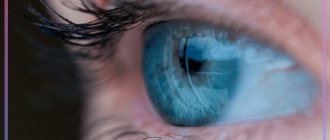Surely you have seen many films and TV series about how mentalists read thoughts and emotions simply by looking at a person and noticing his facial expressions and gestures. Some people are given this skill from birth, while others only with experience. If you think that reading people is difficult, we will dispel your doubts and try to teach indicators that will allow you to “see” your interlocutor.
Look down
If your interlocutor constantly looks down or at his hands, it means he experiences a feeling of shame. If you notice a sudden change in mood, then most likely you expressed something that makes him ashamed or uncomfortable. Or they brought up an awkward topic of conversation. If you initially notice this behavior, expect unpleasant news from your interlocutor, which may upset you. In addition, reading people means helping yourself to react correctly and perceive their words.
Reading body language, gaze
“The eyes are the mirror of the soul,” as one famous proverb says, and indeed, by looking at a person’s eyes you can learn a lot about who you are dealing with. With the help of the eyes, a person transmits many unconscious signals, by which one can understand whether he is lying or telling the truth, is angry or, conversely, is in a good mood. The direction of the gaze to the right, left, up or down may indicate certain thought processes occurring in his head, while the person himself usually does not pay attention to where his gaze is directed, everything happens automatically. Having learned to read body language by looking, you will begin to see literally right through a person - with the help of words you can easily mislead about your intentions, but making your eyes tell lies is much more difficult. Body language is probably the most truthful source of information about a person, but the first thing you should pay attention to is their gaze. In this article, we'll look at several common nonverbal cues conveyed by a person's gaze and eyes.
Reading body language, gaze and other eye signals:
| Signal | Meaning | Details |
| Normal look to the right | Fiction, guesswork, lies, fiction | Looking to the right may indicate thinking about the next statement. Depending on the context, this eye signal could indicate an attempt to mislead you, or a story being created on the fly. If the gaze is directed to the right and downward, it is assumed that the person is appealing to feelings - this can indicate sincerity, or, depending on the context and personality of the person, an attempt to deceive you. |
| Normal look to the left | Remembering, accessing memory, retrieving facts | A glance to the left most likely indicates that a person is accessing information from his memory. Most likely, what he says in this case is true, at least for him. Looking to the left and down can indicate an ongoing internal dialogue, an attempt to come to an opinion, a decision. |
| Look up right | Imagination, fiction, lies | If a person looks to the right and up, this may indicate his appeal to the creative imagination. You should be alerted by the transition of his gaze to the right and upward at the moment when, by definition, he must remember something or provide facts. |
| Extreme look to the left | Imagining sounds | The transition of the gaze to the left may indicate an attempt to imagine sounds. The person may then imagine what the other person might say or invent what they have been told in the past. |
| Look down right | Appeal to the senses | By such a non-verbal signal, one can judge that the imagination is being activated, but this is hardly an attempt to deceive you. This is how a person refers to his feelings and emotions regarding something. To correctly interpret this signal, one must look at the context and other accompanying body signals. |
| Look up left | Link to images from memory | If a person's gaze is directed upward to the left, this may indicate that he is trying to extract facts or any other information from the past from memory. |
| Extreme look to the left | Retrieving sounds from memory | Looking to the left involves recalling sounds from memory, so this signal is read as remembering or thinking about what the other person, or himself, said. |
| Look left down | Internal dialogue, rationalization | Looking down to the left speaks of an internal dialogue taking place in a person’s head regarding things happening around him, which is significantly different from looking down to the right, when a person is immersed in his feelings. |
| Direct eye contact while speaking | Sincerity, or deliberate covering up of lies | Direct eye contact usually indicates the sincerity of the interlocutor, and indicates that he has nothing to hide. But don't let this sign relax you, because people prone to fraud are aware of this circumstance and can easily maintain direct eye contact to hide the lie. |
| Direct eye contact while listening | Attentive listening, interest | A person's gaze, focused on the eyes of the speaker, usually indicates that this person is interested in the interlocutor or the subject of discussion. In some cases, it can be seen as a signal that the “looker” finds the “speaker” attractive. |
| Eyes Wide Open | Interest, call, invitation | Wide eyes, like direct eye contact when listening, can indicate a person's interest in the interlocutor or the subject of conversation, as well as the expectation of a positive response from the interlocutor. Together with raised eyebrows, this signal can be associated with surprise or shock, in addition, sometimes this signal serves as a sign of greeting. Wide eyes in women can be read as a way of increasing attractiveness, in some cases a sign of interest, and much more, depending on the context. |
| Rubbing the eye or eyes | Disbelief, frustration or fatigue | Rubbing the eyes or one eye can indicate disbelief in one's eyes, as well as frustration, or fatigue associated with boredom or the need for sleep. Accompanied by frequent blinking, rubbing the eyes may indicate fatigue. |
| Rolling eyes | Disappointment, frustration | Rolling the eyes upward may serve as a signal of disappointment or irritation; internally the person exclaims something like: “Oh God, where have I gotten myself into?” |
| Pupil dilation | Attraction, desire | A person’s pupils dilate in the dark and contract in the light; this is their natural reaction to a given stimulus. In other cases, dilation of the pupils may be caused by attraction to an object of the opposite sex, or interest and desire to get something. |
| Frequent blinking | Excitement, tension | The normal frequency of human blinking is six to twenty times per minute. An increase in this number of blinks is usually explained by an increase in excitement or tension, and the frequency of blinks can increase up to a hundred times per minute. This signal should not be considered a reliable sign of lying. |
| Raising eyebrows | Greeting, surprise | The rapid raising and lowering of the eyebrows is considered a greeting signal that came to us from primates; this signal is used consciously. Raising your eyebrows and holding them up for a while can be a sign of fear or surprise. |
You can read a lot from a person’s eyes, a lot simply cannot be hidden from view, but to understand what exactly a person feels and thinks, it is not enough to be able to read their eyes. It is necessary to look at the context in which certain body signals appear, and it is necessary to look at and take into account many other body language signals, including gestures, facial expressions, body position and breathing rate. In the following articles, we will try to analyze as many body language signals as possible so that you can build a more accurate understanding of the people with whom you communicate. I wish you success!
Why is it so useful to learn how to read people?
The point is that the better you can evaluate those around you, the more the right people will be around you. In your personal life, this will help you weed out deceitful people, and in business, it will help you build business relationships correctly. And, in fact, it is not as difficult as it seems at first glance. It just naturally takes practice and experience. After some time, analyzing emotions, facial expressions and gestures, you will intuitively feel falsehood or, conversely, pure thoughts and a good attitude towards you.
Text:
Why is it important to make eye contact when speaking?
A strong and confident look is a demonstration of strength. It is not enough to speak confidently and back up your words with actions; you need to behave like a leader. This can be done by looking. Your gaze should be piercing. It is best if random passers-by lower their eyes when you look.
Reasons why gaze is important:
- A confident look makes you look better in the eyes of your interlocutor
- Shows your confidence and seriousness of intentions
- Talks about openness and honesty
Why is it important to make eye contact when speaking?
How to learn not to be afraid to look people in the eyes?
In most cases, people do not look the other person in the eye because of fear and uncertainty. But among politicians and coaches there are special exercises that allow you to look your opponent in the eye. This increases trust on the part of the interlocutor and can be a serious weapon during debates and arguments. Below are tips that will allow you to learn how to confidently look your interlocutor in the eyes.
Recommendations:
- Do daily workouts. To do this, just practice on passers-by. Look into their eyes.
- It is also worth doing exercises for the eye muscles. You need to draw figure eights with your eyes closed and open.
- Spend a few minutes a day assessing how you look in the mirror. This way you can understand what you look like from the outside.
- If you initially find it difficult to learn to look into the eyes, you can focus on the bridge of your nose.
- In the evening, when talking with your interlocutor, concentrate your gaze on the point to the left of your opponent’s face.
- If you notice that as soon as you make eye contact with your opponent and he looks down, you have achieved your goal.
How to learn not to be afraid to look people in the eyes?
Learning to make eye contact is not difficult at all. This requires desire and regular training.
The concept of internal strategies.
There is no person who would use one modality for all occasions. We only prefer one modality, but use all three, and do this in some sequence to make the final decision. This sequence, individual for each group of problems that we solve, is called “internal strategy.” So, for example, when I write a book, each phrase first sends me to the auditory modality: I remember what I said at the seminar and what the listeners asked me about. After that, I switch to the visual modality, imagining what the printed phrase will look like on paper. And then I turn to the kinesthetic modality, trying to feel if the text will be interesting and understandable. Without using the names of modalities, my strategy can be described as “hear-see-feel.” This strategy will work for me when writing any text - letters, articles, notes.
In another situation, say, when choosing a partner for a dance, I will use a different strategy: “see-feel-tell myself” (I see a pretty woman, I feel that she is pleasant to me, I tell myself that it makes sense to ask her to dance). There are different strategies for different tasks; when writing a text, I use the first one, and when inviting someone to spend time with me, I use the second one. For simple tasks, the strategy can also be simple, including not three, but two modalities: “see-feel”, “hear-feel”.
The decision-making strategy of your business partner when concluding a deal or signing an agreement has practical value. Fortunately, people do not hide their internal strategies in the same way as they do not hide their leading modality: strategies are indicated by the sequence of eyeball movements while thinking about your business proposal, or by the typical sequence of predicate words that your partner quite calmly allows during a conversation. The skill of using the internal strategy of a business partner is more complex than the previous ones, and it was not practiced at the seminar on the topic of hypnosis.
I will still give an example of using such a skill; this is again an example from A. Sitnikov: “...I wanted to tell you one example, very understandable for businessmen. We needed to come to an agreement with a very important person. We met with him and expressed all our arguments. And he says: “Listen, guys, I think we have nothing to talk about with you. We won't talk to you." We listened to his lecture. At the lecture he made the following pattern (template, stereotype), movement: “I thought it would be very bright if it were easy” (performed in the appropriate modalities). And such patterns were repeated constantly. We come up to him after the lecture and say: “We listened to you now, and we got the idea that we have opportunities for close cooperation.” We ourselves did not expect that he would answer us like that: “Guys, that’s what they would have said right away.” We haven't added a single argument. We simply gave him the opportunity to perceive the information in a form that was understandable to him. He saw everything the way he sees information that is understandable to him. And, as clear information, I assessed it accordingly.” From the above example, it is clear that the use of a business partner’s internal strategy comes down to organizing one’s own message in such a way that predicate words in this message alternate in the same way as the corresponding modalities alternate in the partner’s strategy.
Summary.
1. To create rapport, you first coordinate your behavior with that of your partner, using skills to adjust your posture and movements.
2. You can improve rapport by using skills to connect to physiological functions that your partner is not aware of, such as breathing. You can do this directly by coordinating your physiological function with that of your partner; or indirectly - by coordinating another function (speech, movements, etc.) with some physiological function of the partner.
3. To maintain rapport in verbal communication, you use information about your partner’s leading modality, obtained by observing the movement of his eyeballs and by analyzing predicate words from his speech. You must translate your decisive arguments into the language of your partner’s leading modality. Your message influences your partner even more effectively if, when constructing it, you are able to use the partner’s internal strategy, which he uses when working with a given group of problems.
4. After adjustment, you can control your partner, lead him in the direction you want, gradually changing his behavior and physiological functions through changes in your behavior.
| • Home • Pure Power • Neuro-Linguistic Programming • Eye Movements and Modalities |










